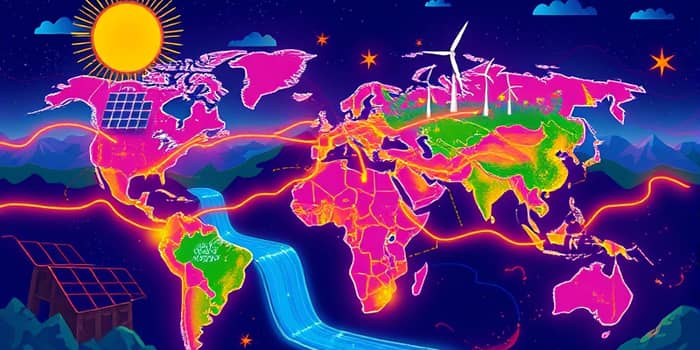
Global energy finance is experiencing an extraordinary transformation as nations and corporations pour resources into sustainable power sources. The year 2025 is set to redefine the energy landscape, with record investments unleashing a wave of innovation and environmental hope.
According to the International Energy Agency, total energy investment will reach a staggering $3.3 trillion in 2025. Of this, two-thirds will flow into clean energy technologies, including renewables, nuclear, modern grids, electrification, and low-emission fuels. This marks a 2% real-term increase over 2024 levels, underscoring the record-breaking momentum in clean energy despite economic headwinds.
Amid macroeconomic uncertainty and geopolitical tensions—amplified by events like Russia’s invasion of Ukraine—governments and businesses are prioritizing energy security in the wake of global events. Investment in fossil fuels (oil, gas, and coal) will total $1.1 trillion, less than half of the clean energy allocation. This shift highlights a fundamental change in priorities, where climate goals and supply resilience converge.
Solar energy leads the charge with projected investments of $450 billion in 2025, making it the largest single investment category worldwide. Prices for solar photovoltaics have plummeted over the past decade, unlocking dramatic cost reductions fueling momentum and widening adoption across sectors.
This surge is not merely a statistic but a reflection of communities gaining access to clean, affordable electricity. From rural villages powered by rooftop panels to urban centers grid-connected to offshore turbines, solar’s reach is expanding rapidly.
While Asia—led by China—dominates renewable capacity growth, significant gaps persist. Africa, home to 20% of the global population, receives just 2% of clean energy funding, leaving millions without reliable power. Similarly, Central America and the Caribbean captured only 3.2% of new capacity in 2024.
These disparities echo broader challenges: uneven access to capital, infrastructure bottlenecks, and policy gaps. Bridging these divides is essential for a truly global energy transition that leaves no region behind.
Several factors propel this unprecedented investment wave:
• Investor momentum is shifting away from fossil fuels, driven by climate goals and risk awareness.
• National policies—like feed-in tariffs and tax incentives—continue to foster renewable deployment, notably in China and Vietnam.
• Energy security concerns encourage diversification of supply, reducing reliance on imported hydrocarbons.
Despite these gains, achieving the Net Zero Emissions Scenario by 2035 demands annual clean energy investment to surge to $5.3 trillion. Crucially, grid infrastructure must keep pace with generation capacity to avoid reliability risks and bottlenecks.
Despite strong momentum, the clean energy transition faces hurdles. Addressing these issues is critical to sustaining growth:
However, every challenge presents an opportunity. Advances in battery technology, digital monitoring, and smart grids can transform intermittency into flexibility. Innovative financing models—such as green bonds and blended public-private partnerships—can unlock funds for underfunded regions.
The record-breaking investments of 2025 are more than numbers on a balance sheet; they represent a collective commitment to a cleaner, more resilient world. Yet, urgent need to triple capacity by 2030 underscores that the journey has only begun.
To fully realize this potential, stakeholders must bridge critical investment gaps in infrastructure and emerging economies, champion equitable policies, and cultivate innovation. By doing so, we harness not only the power of wind and sun but the human spirit’s capacity to reshape our planet’s destiny.
As capital flows surge, let us guide these resources with vision and purpose, forging a legacy of sustainable prosperity for generations to come.
References













